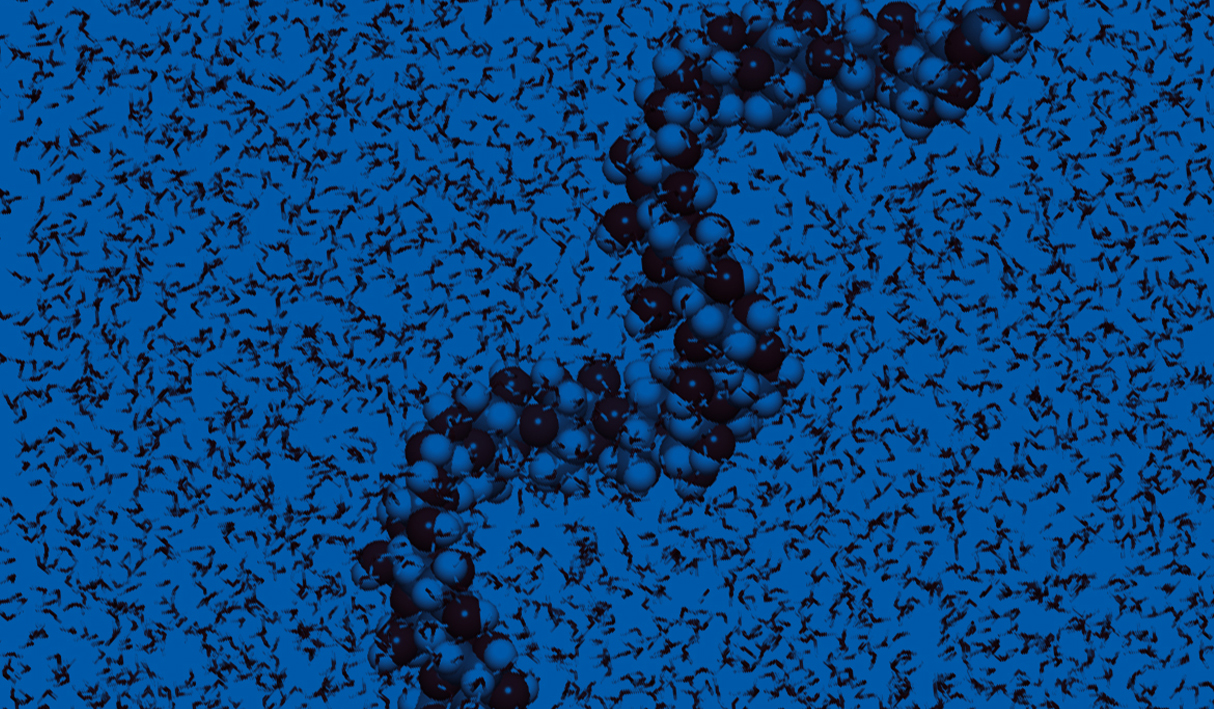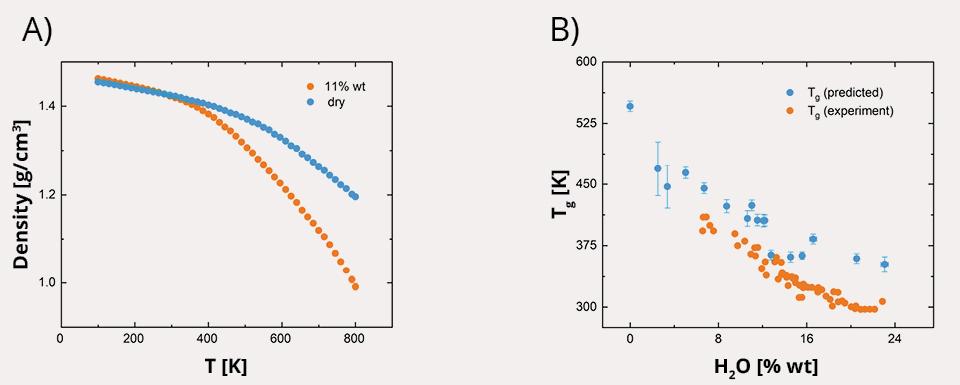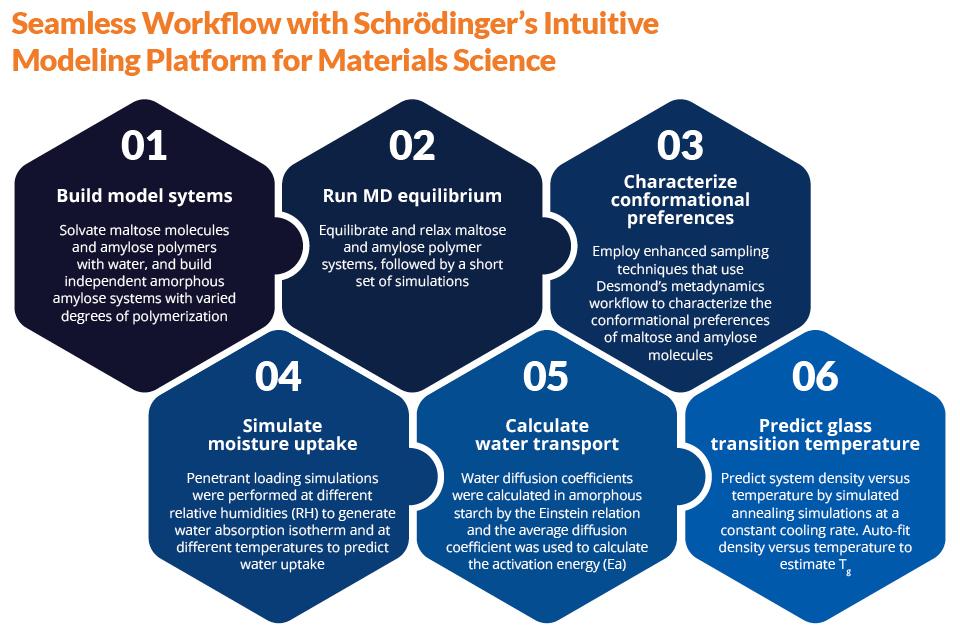Prediction of moisture adsorption and effects on amorphous amylose starch
Molecular Dynamics simulations accelerate optimization of product quality and processing for food and beverage, packaging, and pharmaceutical applications.

Executive Summary
- Accurately predicted key physical properties such as glass transition temperature (Tg) for both wet and dry amorphous amylose polymers
- Effectively modeled water uptake and transport by investigating the effect of moisture content on Tg and water diffusion in starch polymers
- OPLS3e force field provided high accuracy for amorphous starch models
- Further studies proposed on in-depth water-amylose interactions and the effects of ingredients on complex starch formulation
Challenges
As amorphous starch is highly attractive for applications in thermoplastics and food encapsulation, understanding its functionality is a high priority for R&D scientists in several industries. Key to starch functionality is the interaction between water and starch granules. Numerous studies have focused on understanding the microstructure and the underlying nanostructure of starch, however a thorough understanding of the molecular structures of native and amorphous granules is challenging to characterize experimentally. This results in:
- Lack of high resolution, atomic level structural characterizations
- Lack of morphological or thermophysical properties of amorphous starch
- Lack of dynamic properties of amorphous starch in solvent
Approach
Scientists at Schrödinger aimed to solve these challenges by using molecular simulation techniques, specifically molecular dynamics (MD) simulations.1 All models and simulations were performed using the Schrödinger Materials Science Suite. These methods predicted water uptake at a given temperature and relative humidity condition and also allowed for tracking of water transport in the starch polymer matrix.
Results
MD simulations have greatly improved our understanding of amylose molecules in solution and bulk phase and have led to rapid prediction of key physical properties such as Tg.
- The results illustrate the plasticization effect of moisture content on amorphous starch. Predicted glass transition temperature (Tg) depression as a function of moisture content is in line with experimental trends and allows prediction of the previously inaccessible dry Tg of amorphous starch.
- Using combined grand canonical Monte Carlo (GCMC)/MD simulations, a moisture sorption isotherm curve is predicted along with temperature dependence. Concentrationdependent activation energies for water transport agree quantitatively with previous experiments.
- The modern OPLS3e force field and welltempered metadynamics provided highly accurate prediction of dynamical properties and conformations for amorphous starch polymers in addition to solution behavior.

What’s Next?
- Further studies can explore in-depth water-amylose interactions and the effects of other commonly used ingredients in starch formulations, for example emulsifiers, which are known to bind to amylose molecules.
- Future work can be performed to understand the morphology of complex amorphous and/or semi-crystalline starch formulations and how morphology affects transport and thermomechanical properties.
References
-
Jeffrey M.Sanders, Mayank Misra, Thomas J.L.Mustard, David J.Giesen, Teng Zhang, John Shelley, Mathew D.Halls, “Characterizing moisture uptake and plasticization effects of water on amorphous amylose starch models using molecular dynamics methods”, Carbohydrate Polymers, 252, 2021, 117161.
*The figures were published in the referenced paper. Copyright Elsevier
Software and services to meet your organizational needs
Industry-Leading Software Platform
Deploy digital drug discovery workflows using a comprehensive and user-friendly platform for molecular modeling, design, and collaboration.
Research Enablement Services
Leverage Schrödinger’s team of expert computational scientists to advance your projects through key stages in the drug discovery process.
Scientific and Technical Support
Access expert support, educational materials, and training resources designed for both novice and experienced users.
